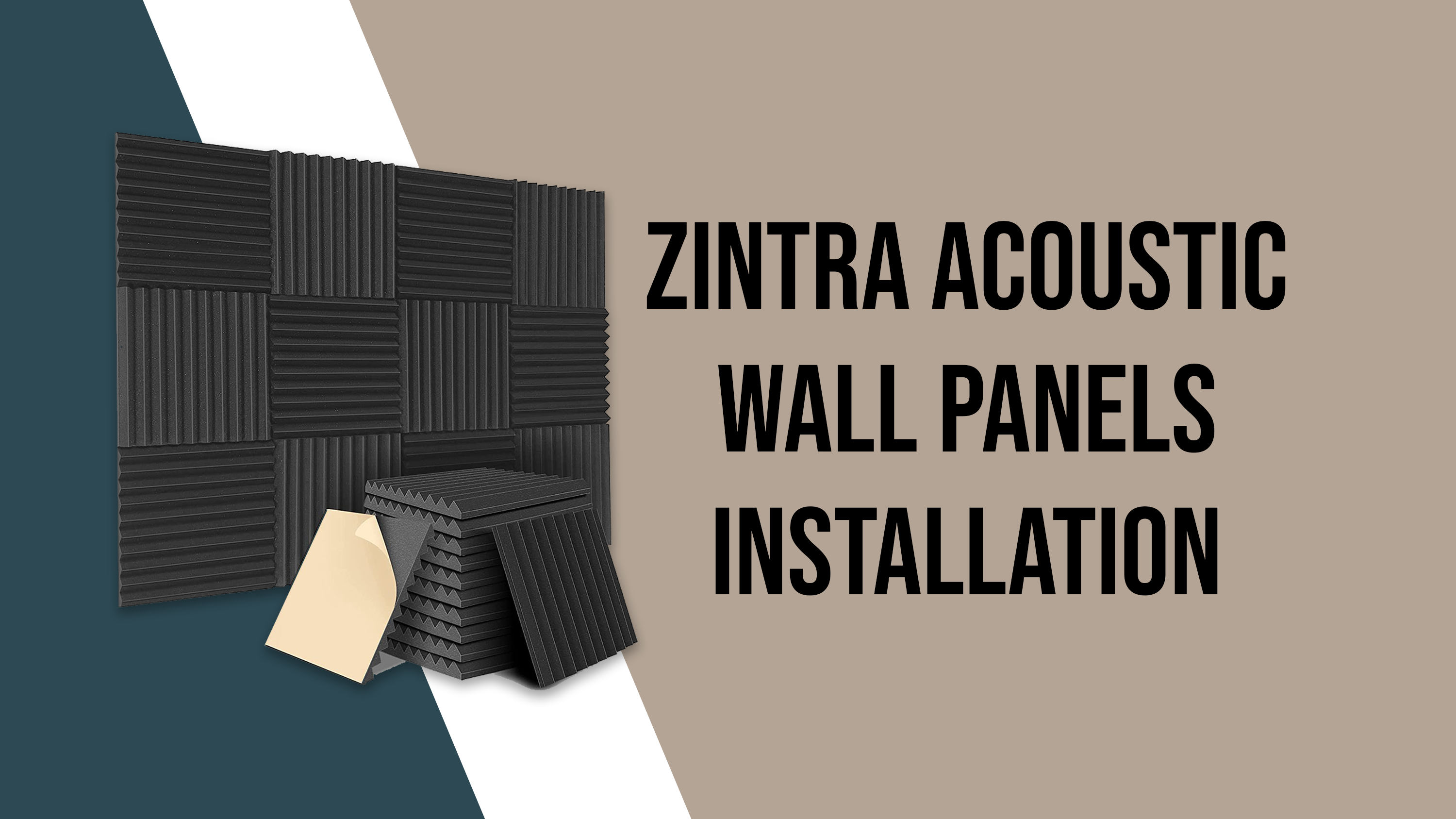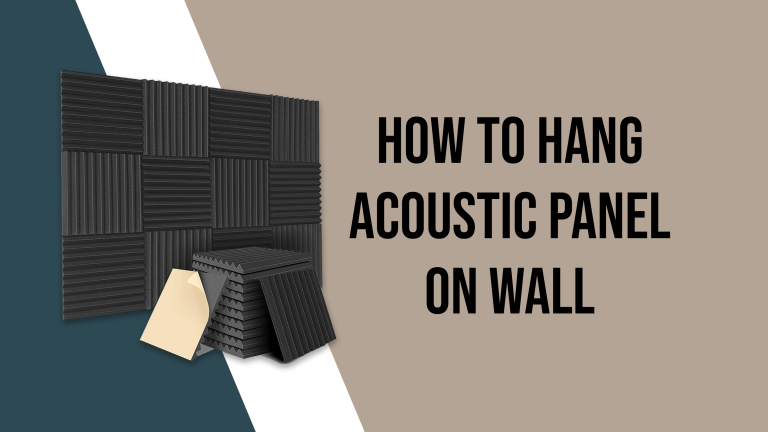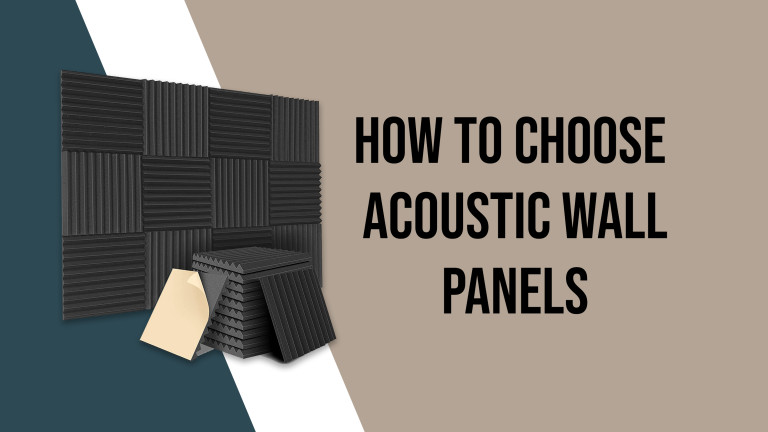Zintra Acoustic Panels Installation
Are you looking for guide about Zintra acoustic panel installation?
You can easily install Zintra acoustic panels in your home theatre or anywhere you want to install them.
Zintra acoustic panel is a perfect acoustic material. Its performance is great. I have created my own acoustic panel.
In this article, I will share some common techniques for installation of Zintra acoustic panel. But, here’s the quick answer for you.
Zintra Acoustic Panel Installation
You may fix the zintra acoustic panel to an existing frame such as the plaster boards. Or by using a timber frame directly on the wall. They are easy to install.
Now, I will share the different techniques to zintra acoustic panel installation.

Techniques to Install Zintra Acoustic Panel
Here are the four techniques for the installation of zintra acoustic panel. You can use any technique of them. Which suites to you.
Through Direct Fixation
Step 1
First of all, take a bead then apply it on the backside of your acoustic panel, make sure it shouldn’t be more than 1 inch. Then apply the adhesive in diagonal pattern or in a zig zag manner on the backside throughout the center of your panel.
Step 2
Within 15 minutes, attach your panel to the substrate, make sure that your adhesive shouldn’t be skin over. Now fix the panel on the substrate and smooth it with an open palm.
The panel should now be taken off from the substrate and held off the surface for a minute.
Now reset the panel and secure it by applying firm pressure while smoothing. If you feel the need to keep this in place while the adhesive is still wet then you should use mechanical fasteners.
Tip:
Don’t use liquid adhesive it won’t work.
Now install your panel on the wall. Perfect!
Mechanical Fasteners
You can also install your Zintra acoustic panel by using mechanical fasteners such as screws.
Follow these steps to install Zintra acoustic panels:
Step 1
When using the screws for installation, we advise you pre-drilling the holes first and utilize the span or pan head.
Choosing a solid carbide drill bit with the correct diameter for the screw you have chosen.
Choose an anchor that is suitable for your substrate. The average weight of a Zintra panel is about 18 pounds.
Step 2
Be careful not to compress the Zintra unevenly by overtightening any of the screws.
Power nailing is possible if you modify the gun tip for the panel’s density.
By Using Z- Clips
Step 1
Each Z-clip consists of two components, one attached to the wall foundation and the other to the object’s back.
If you are utilizing a Z-clip system, make sure to leave a space at the ceiling line that is large enough to allow the clip to be lifted up over the piece of the clip that is hanged on the wall and then pushed in to be correctly installed.
Typically, there is a 1 inch or so gap between the panels and ceiling.
To firmly mount the panel, you will need anything between 3 to 6 Z-clips, based on the size of the panel.
The objective is to install each panel plumb and level.
Step 2
Start by attaching the front of the first panel to the front half of each Z clip.
The clip should be facing downward (open gap is down). Install the most advanced
Insert no closer than 1″ from the panel’s top horizontal edge. Each clip should be spaced no closer than 2 inches below the clip above it. Each clip should be centered on the panel and no closer than 6 inches away from each vertical side edge.
Step 3
The panel clip halves should be fastened to the panel with 1/2″ pan head sheet metal screws, #8 “long. For these screws, you will need to drill holes in the Z clip halves rather than the panel itself. Sparingly tighten the screws. Place a screw anchor at least every 12” apart “throughout the clip.
Now that each half clip is fastened to the panels, you can arrange how the other half of each clip will be fastened to the substrate.
Before seating each, be sure your placements are planned to accommodate the height drop required to lift the panels so over bottom clips. As was previously stated in this paper, the normal allowance is at least 1″ from the ceiling to the panel.
On the substrate, measure down to the ceiling and place the uppermost clip on a straight axis that will allow the two parts to be correctly seated once the panel is mounted. Before committing, make sure that these clipping positions are straight and spaced properly to work with the opposing half.
Mount these hooks using a substrate-appropriate anchor. Gypsum board in the size of 5/8″ is most frequently used. Choose your anchor with the knowledge that a pan of the proper length that securely embed into the walls is the best option for the screw.
For this, we do not advise using fluted head drywall screws. Each half of the Z-clip needs a hole drilled in it for one of these screws.
Now that the wall halves are fastened, you can elevate the panel to slide it over the Z-clips and lower it into place.
By Using Stand-Offs
Step 1:
You can use stand-offs to install the panels. The number of stands-off depend on your acoustic panel dimension. To prevent panel folding, blocking using stand-offs is also advised as a concealed support.
Mark the panel’s back to indicate where to drill each hole needed for each stand-off. No holes should be located less than 3 inches from the panel’s outer corners.
Use a power drill to produce a standoff using a solid carbide bit of the proper diameter. They are not provided, so you must determine them. Each of the holes you’ve designated.
Step 2:
Now that all of the holes have been created, locate the exact position of where the panel has to be set up. A level and plumb panel should be held by one person.
Take your friend or anybody for help and ask him/her to label the substrate to indicate exactly where the holes should be placed.
Step 3:
Each stand-off base should be attached to the substrate with the proper connection. We suggest positioning an existing wall support for the backing or positioning a vertical columns of anchors to rest on a wall stud as opposed to suspending the entire weight from only one stud.
To affix the stand-off head cap trims and secure the panel, lay it over the stand-off bases. Do not overtighten, only use manual tightening.
How do you cut Zintra acoustic panels?
You can use a metal-cutting blade in a chopsaw, hacksaw, or jigsaw to cut the Z-clips. Start by attaching the top and bottom clips. These will be placed such that they are 3″ apart from the panel’s top and bottom horizontal margins.
How do you install an acoustic wood panel?
What is Zintra made of?
In addition, Zintra panels are 100% polyester rather than the conventional fibre glass materials that we employ. The NRC ratings of many common 1′′ or 2′′ fabric-wrapped acoustic panels range from 0.8 to 1.05, however the performance of 1/2′′ Zintra Panels is in the lower range of 0.3–0.5.








